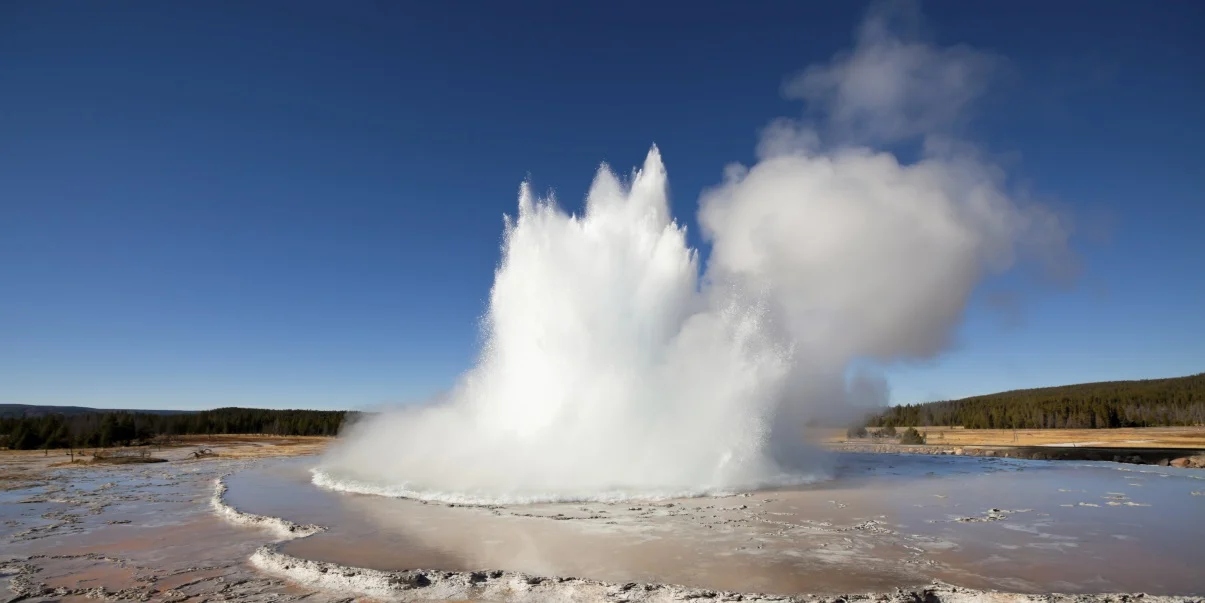Comments
- No comments found

The United States is placing its bets on geothermal energy.
Despite its current minimal contribution to the country's energy production, it is expected to emerge as a cornerstone of the renewable energy landscape.
Several businesses and the administration of President Joe Biden are banking on technological advancements to elevate geothermal energy's status in the green transition.
Energy Secretary Jennifer Granholm, speaking at the CERAWeek conference in Houston, emphasized the potential of capturing the Earth's heat to provide clean, reliable, and scalable power for various sectors, from industries to households. The Department of Energy projects that geothermal energy could surpass hydroelectric and solar power in the U.S. by 2050.
Geothermal energy, which harnesses the natural heat from beneath the Earth's surface, is primarily utilized for electricity generation and heating buildings. However, it accounted for only 1.6 percent of U.S. energy consumption in 2022. To expand its production, the U.S. government has allocated over $200 million since 2018 for an experimental site in Utah, focusing on drilling exceptionally deep wells as part of the Enhanced Geothermal Systems (EGS) approach.
EGS involves injecting water into hot rocks deep underground, a method distinct from traditional near-surface geothermal energy extraction. This technique, resembling but differing from hydraulic fracturing (fracking) used in oil and gas extraction, aims to access the Earth's heat reservoirs without relying on hot springs or underground reservoirs.
Francesco d'Avack, an analyst with S&P Global Commodity Insights, highlights the versatility of geothermal energy, noting its reduced upfront risk compared to traditional drilling methods. Additionally, the U.S. government's streamlined permit conversion process from oil or gas exploration to geothermal licenses aims to expedite development and reduce administrative hurdles.
Moreover, the Energy Department emphasizes the environmental benefits of EGS, citing its minimal use of chemical additives compared to conventional fracking. Geothermal drilling also avoids the release of hydrocarbons and provides a consistent energy supply unaffected by weather or time of day.
Cost-wise, the Energy Department projects a decline in geothermal energy prices from the current range of $70 to $100 per megawatt hour (MWh) to $45 by 2035. Leveraging existing drilling technology enables quicker and more cost-effective geothermal project development, further incentivizing investment and adoption.
Jigar Shah from the Energy Department's loan office underscores the transformative potential of applying oil and gas operational models to geothermal energy, facilitating significant progress in the sector. Ajit Menon of Baker Hughes echoes this sentiment, acknowledging the U.S.'s leadership in advancing geothermal technology.
Despite the promise of geothermal energy, concerns about induced seismic activity, akin to fracking, persist. The U.S. Energy Department mandates funded projects to adhere to mitigation protocols, while ongoing research seeks to address seismicity issues.
Multiple start-ups in the U.S. and Canada are positioning themselves in the burgeoning geothermal market, attracting substantial investments. Fervo Energy, in collaboration with Google, recently connected its Nevada geothermal site to the electric grid. As demand grows, major companies like Google, Microsoft, and Nucor are committing to purchasing geothermal energy, signaling market potential and attracting further private investment.
Cindy Taff, CEO of Sage Geosystems, emphasizes the need for a successful commercial facility to catalyze industry growth, anticipating a domino effect of adoption once demonstrated. With careful expansion, industry stakeholders aim to ensure sustainable and inclusive growth, positioning geothermal energy as a key player in the transition to a greener future.
Leave your comments
Post comment as a guest